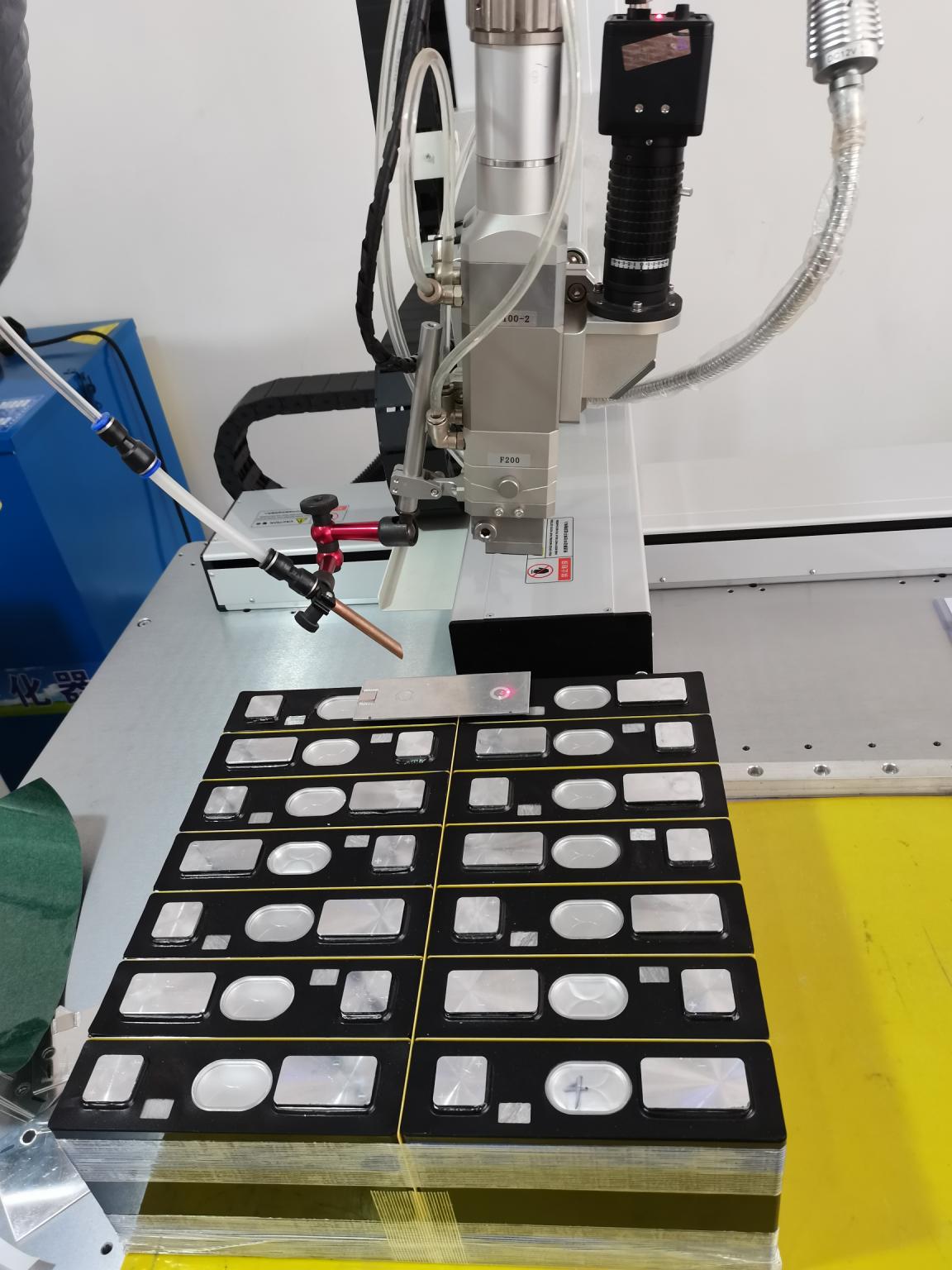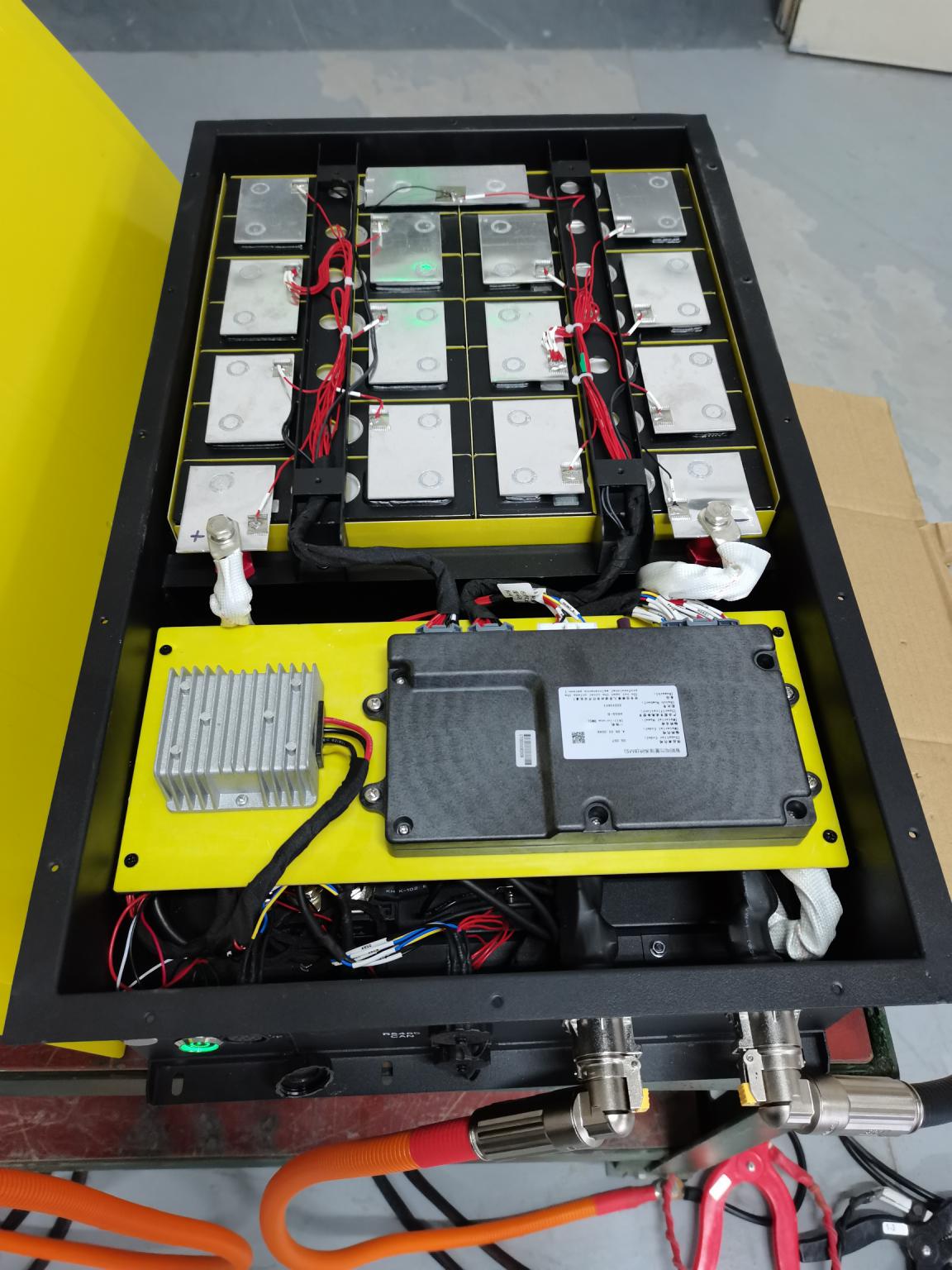- 12
- Nov
リチウムイオン電池の内部抵抗に影響を与える要因
With the use of lithium batteries, battery performance continues to decay, mainly as capacity decay, internal resistance increase, power drop, etc. The change of battery internal resistance is affected by various usage conditions such as temperature and discharge depth. Therefore, the factors that affect the internal resistance of the battery are described in terms of battery structure design, raw material performance, manufacturing process and use conditions.

抵抗は、リチウム電池が動作しているときに電流が電池内を流れるときに受ける抵抗です。 一般に、リチウム電池の内部抵抗は、オーム内部抵抗と分極内部抵抗に分けられます。 オーミック内部抵抗は、電極材料、電解質、ダイアフラム抵抗、および各部品の接触抵抗で構成されます。 分極内部抵抗とは、電気化学分極内部抵抗および濃度分極内部抵抗を含む、電気化学反応中の分極によって引き起こされる抵抗を指します。 電池のオーム内部抵抗は電池の全導電率によって決定され、電池の分極内部抵抗は電極活物質中のリチウムイオンの固相拡散係数によって決定されます。

Ohm resistance
オーム抵抗は主にXNUMXつの部分に分けられます。XNUMXつはイオンインピーダンス、もうXNUMXつは電子インピーダンス、XNUMXつ目は接触インピーダンスです。 リチウム電池の内部抵抗をできるだけ小さくしたいので、これらXNUMXつの項目のオーム内部抵抗を減らすための特別な対策を講じる必要があります。
Ion impedance
Lithium battery ion resistance refers to the resistance to the transmission of lithium ions inside the battery. In a lithium battery, the lithium ion migration speed and the electron conduction speed play an equally important role, and the ion resistance is mainly affected by the positive and negative electrode materials, the separator, and the electrolyte. To reduce ion impedance, you need to do the following:
Ensure that the positive and negative materials and electrolyte have good wettability
ポールピースを設計する際には、適切な締固め密度を選択する必要があります。 圧縮密度が大きすぎると、電解液が浸透しにくくなり、イオン抵抗が増加します。 負極部品の場合、最初の充放電時に活物質の表面に形成されるSEI膜が厚すぎると、イオン抵抗も増加します。 このとき、バッテリーの形成過程を調整して解決する必要があります。
電解質の影響
The electrolyte must have the appropriate concentration, viscosity and conductivity. When the viscosity of the electrolyte is too high, it is not conducive to the infiltration between the electrolyte and the active materials of the positive and negative electrodes. At the same time, the electrolyte also needs a low concentration, too high concentration is also not conducive to its flow and infiltration. The conductivity of the electrolyte is the most important factor affecting ion resistance, which determines the migration of ions.
ダイヤフラムがイオン抵抗に及ぼす影響
The main influencing factors of the diaphragm on the ion resistance are: electrolyte distribution in the diaphragm, diaphragm area, thickness, pore size, porosity, and tortuosity coefficient. For ceramic diaphragms, it is also necessary to prevent ceramic particles from blocking the pores of the diaphragm, which is not conducive to the passage of ions. While ensuring that the electrolyte is fully infiltrated into the diaphragm, there should be no excess electrolyte remaining in it, which reduces the efficiency of the electrolyte.
電子インピーダンス
電子インピーダンスには多くの影響要因があり、材料やプロセスなどの側面から改善することができます。
Positive and negative plates
The main factors affecting the electronic impedance of the positive and negative plates are: the contact between the active material and the current collector, the factors of the active material itself, and the parameters of the plate. The active material should be in full contact with the current collector surface, which can be considered from the current collector copper foil, aluminum foil base material, and the adhesion of the positive and negative electrode pastes. The porosity of the living material itself, the by-products on the surface of the particles, and the uneven mixing with the conductive agent, etc., will cause the electronic impedance to change. Polar plate parameters such as the density of living matter is too small, the gap between the particles is too large, which is not conducive to electron conduction.
ダイアフラム
ダイヤフラムの電子インピーダンスに影響を与える主な要因は、ダイヤフラムの厚さ、多孔性、および充電および放電プロセスでの副産物です。 最初のXNUMXつは理解しやすいです。 バッテリーを分解した後、グラファイトの負極とその反応副産物を含む茶色の材料の厚い層がセパレーターにしばしば見られ、ダイアフラムの細孔を塞ぎ、バッテリーの寿命を縮めます。
集電体基板
The material, thickness, width of the current collector and the degree of contact with the tabs all affect the electronic impedance. The current collector needs to choose a substrate that has not been oxidized and passivated, otherwise it will affect the impedance. Poor welding between copper and aluminum foil and tabs will also affect electronic impedance.
接触抵抗
銅箔とアルミ箔の接触と活物質との間に接触抵抗が生じ、正極と負極のペーストの密着性に注意を払う必要があります。
分極した内部抵抗
When current passes through the electrodes, the phenomenon that the electrode potential deviates from the equilibrium electrode potential is called electrode polarization. Polarization includes ohmic polarization, electrochemical polarization and concentration polarization. Polarization resistance refers to the internal resistance caused by the polarization of the positive electrode and the negative electrode of the battery during the electrochemical reaction. It can reflect the internal consistency of the battery, but it is not suitable for production due to the influence of the operation and method. The internal polarization resistance is not constant, and it changes with time during the charging and discharging process. This is because the composition of the active material, the concentration and temperature of the electrolyte are constantly changing. The ohmic internal resistance obeys Ohm’s law, and the polarization internal resistance increases with the increase of the current density, but it is not a linear relationship. It often increases linearly as the logarithm of the current density increases.
構造設計の影響
バッテリー構造の設計では、バッテリー構造自体のリベット留めと溶接に加えて、バッテリータブの数、サイズ、および位置がバッテリーの内部抵抗に直接影響します。 タブの数をある程度増やすと、バッテリーの内部抵抗を効果的に減らすことができます。 タブの位置は、バッテリーの内部抵抗にも影響します。 正極部と負極部の先端にタブ位置がある巻線バッテリーの内部抵抗が最大です。 巻かれた電池と比較して、積層電池は並列の数十の小さな電池に相当します。 、その内部抵抗は小さいです。
原材料の性能への影響
Positive and negative active materials
リチウム電池では、正極材料はリチウム貯蔵側であり、リチウム電池の性能をより決定します。 正極材料は、主にコーティングとドーピングによって粒子間の電子伝導性を向上させます。 たとえば、Niをドープすると、PO結合の強度が向上し、LiFePO4 / Cの構造が安定し、セルの体積が最適化され、正極材料の電荷移動抵抗を効果的に低減できます。 活性化分極、特に負極の活性化分極の大幅な増加が、深刻な分極の主な理由です。 負極の粒子サイズを小さくすると、負極の活性分極を効果的に減らすことができます。 負極の固相粒子サイズを半分にすると、活性分極を45%減らすことができます。 そのため、電池の設計上、プラス・マイナスの材料自体の改良に関する研究も欠かせません。
導電剤
グラファイトとカーボンブラックは、その優れた特性からリチウム電池の分野で広く使用されています。 グラファイトベースの導電剤は、粒子形態が薄片状であり、細孔の屈曲度が大幅に増加するため、カーボンブラックベースの導電剤を含む正極は、バッテリーレート性能が優れています。 Li液相拡散が起こりやすいプロセスが放電容量を制限する現象。 CNTを添加したバッテリーは、グラファイト/カーボンブラックと活物質との点接触に比べて、繊維状のカーボンナノチューブが活物質と線状に接触しているため、内部抵抗が低く、バッテリーの界面インピーダンスを低下させる可能性があります。
Current collector
集電体と活物質間の界面抵抗を低減し、両者間の結合強度を向上させることは、リチウム電池の性能を向上させるための重要な手段です。 アルミホイルの表面に導電性カーボンコーティングをコーティングし、アルミホイルにコロナ処理を施すことで、バッテリーのインターフェースインピーダンスを効果的に低減できます。 通常のアルミホイルと比較して、カーボンコーティングされたアルミホイルを使用すると、バッテリーの内部抵抗を約65%低減でき、使用中のバッテリーの内部抵抗の増加を低減できます。 コロナ処理したアルミホイルのAC内部抵抗を約20%低減できます。 一般的に使用されている20%〜90%のSOC範囲では、全体的なDC内部抵抗は比較的小さく、放電の深さが増すにつれて増加は徐々に小さくなります。
ダイアフラム
The ion conduction inside the battery depends on the diffusion of Li ions in the electrolyte through the porous diaphragm. The liquid absorption and wetting ability of the diaphragm is the key to forming a good ion flow channel. When the diaphragm has a higher liquid absorption rate and porous structure, it can be improved. Conductivity reduces battery impedance and improves battery rate performance. Compared with ordinary base membranes, ceramic diaphragms and rubber-coated diaphragms can not only greatly improve the high temperature shrinkage resistance of the diaphragm, but also enhance the liquid absorption and wetting ability of the diaphragm. The addition of SiO2 ceramic coating on the PP diaphragm can make the diaphragm absorb liquid The volume increased by 17%. Coating 1μm PVDF-HFP on the PP/PE composite diaphragm, the liquid absorption rate of the diaphragm is increased from 70% to 82%, and the internal resistance of the cell is reduced by more than 20%.
製造工程や使用条件の観点から、バッテリーの内部抵抗に影響を与える要因は主に次のとおりです。
プロセス要因は影響します
パルプ化
混合中のスラリー分散液の均一性は、導電剤が活物質と密接に接触して均一に分散できるかどうかに影響し、これは電池の内部抵抗に関係します。 高速分散を大きくすることで、スラリー分散の均一性を向上させ、電池の内部抵抗を小さくすることができます。 界面活性剤を添加することにより、電極内の導電剤の分布の均一性を改善することができ、電気化学的分極を低減することができ、放電電圧の中央値を増加させることができる。
コーティング
面密度は、バッテリー設計の重要なパラメーターのXNUMXつです。 電池容量が一定の場合、ポールピースの面密度を上げると必然的に集電体とダイヤフラムの全長が短くなり、それに応じて電池のオーム抵抗が低下します。 したがって、一定の範囲内では、面密度が増加するにつれてバッテリーの内部抵抗が減少します。 コーティングおよび乾燥中の溶媒分子の移動および分離は、オーブンの温度と密接に関連しており、ポールピース内のバインダーおよび導電剤の分布に直接影響し、ポールピース内の導電性グリッドの形成に影響します。 したがって、コーティングと乾燥のプロセス温度もバッテリーの性能を最適化するための重要なプロセスです。
圧延
圧縮密度が高くなると、バッテリーの内部抵抗はある程度低下します。 圧縮密度が高くなるため、原料粒子間の距離が短くなります。 粒子間の接触が多いほど、より導電性の高いブリッジとチャネル、およびバッテリーインピーダンスが低下します。 圧縮密度の制御は、主に圧延厚さによって実現されます。 圧延の厚さが異なると、バッテリーの内部抵抗に大きな影響を与えます。 圧延厚さが大きいと、活物質がしっかりと圧延されないため、活物質と集電体との接触抵抗が大きくなり、電池の内部抵抗が大きくなる。 電池を循環させた後、比較的厚い圧延厚さで電池の正極表面に亀裂が発生し、これにより、ポールピースの表面活物質と集電体との間の接触抵抗がさらに増加する。
ポールピースのターンアラウンドタイム
正極の異なる保存時間は、バッテリーの内部抵抗に大きな影響を与えます。 貯蔵時間が短い場合、リン酸鉄リチウムおよびリン酸鉄リチウムの表面の炭素コーティング層の影響により、バッテリーの内部抵抗はゆっくりと増加します。 バッテリーを長期間(23時間以上)放置すると、リン酸鉄リチウムと水との反応と接着剤の接着の複合効果により、バッテリーの内部抵抗が大幅に増加します。 そのため、実際の生産ではポールピースのターンアラウンドタイムを厳密に管理する必要があります。
液体注射
電解質のイオン伝導度は、バッテリーの内部抵抗とレート特性を決定します。 電解質の導電率は溶媒の粘度に反比例し、リチウム塩の濃度と陰イオンのサイズにも影響されます。 導電率の最適化研究に加えて、注入量と注入後の浸透時間もバッテリーの内部抵抗に直接影響します。 注入量が少ない、または浸透時間が不十分な場合、バッテリーの内部抵抗が大きくなりすぎて、バッテリーの再生容量に影響を及ぼします。
使用条件の影響
温度
内部抵抗に対する温度の影響は明らかです。 温度が低いほど、バッテリー内部のイオン透過が遅くなり、バッテリーの内部抵抗が大きくなります。 バッテリーインピーダンスは、バルクインピーダンス、SEI膜インピーダンス、および電荷移動インピーダンスに分けることができます。 バルクインピーダンスとSEI膜インピーダンスは主に電解質のイオン伝導率の影響を受け、低温での変化傾向は電解質伝導率の変化傾向と一致しています。 低温でのバルクインピーダンスとSEI膜抵抗の増加と比較して、電荷反応インピーダンスは温度の低下とともにより顕著に増加します。 -20°C未満では、充電反応インピーダンスがバッテリーの全内部抵抗のほぼ100%を占めます。
SOC
バッテリーのSOCが異なると、内部抵抗も異なります。特にDC内部抵抗は、バッテリーの電力性能に直接影響し、実際の状態でのバッテリー性能を反映します。リチウムバッテリーのDC内部抵抗は次のように変化します。バッテリーの放電深度DOD内部抵抗は基本的に10%〜80%の放電間隔で変化しません。 一般に、内部抵抗は、放電深度が深くなると大幅に増加します。
ストレージ
リチウムイオン電池の保管期間が長くなると、電池は古くなり、内部抵抗が大きくなります。 リチウム電池の種類が異なれば、内部抵抗の変化の程度も異なります。 9〜10ヶ月の長期保管後、LFPバッテリーの内部抵抗増加率はNCAおよびNCMバッテリーのそれよりも高くなっています。 内部抵抗の増加率は、保管時間、保管温度、保管SOCに関連しています。
サイクル
保管でもサイクリングでも、温度はバッテリーの内部抵抗に同じ影響を及ぼします。 サイクル温度が高いほど、内部抵抗の増加率が高くなります。 サイクル間隔が異なると、バッテリーの内部抵抗に異なる影響があります。 バッテリーの内部抵抗は、充電と放電の深さの増加とともに増加し、内部抵抗の増加は、充電と放電の深さの増加に比例します。 サイクル内の充電と放電の深さの影響に加えて、充電カットオフ電圧も影響を及ぼします。充電電圧の上限が低すぎたり高すぎたりすると、電極の界面インピーダンスが増加します。パッシベーション膜は、上限電圧が低すぎるとうまく形成できず、電圧上限が高すぎると、LiFePO4電極の表面で電解質が酸化および分解して、導電率の低い製品が形成されます。
他の
車載リチウム電池は、実際の使用では必然的に路面状態が悪くなりますが、研究によると、リチウム電池の振動環境は、使用プロセス中のリチウム電池の内部抵抗にほとんど影響を与えません。
Outlook
内部抵抗は、リチウムイオンの電力性能を測定し、バッテリーの寿命を評価するための重要なパラメーターです。 内部抵抗が大きいほど、バッテリーのレート性能が低下し、保管およびリサイクル中のバッテリーの増加が速くなります。 内部抵抗は、電池の構造、電池の材質、製造工程に関係し、周囲温度や充電状態の変化に伴って変化します。 したがって、低内部抵抗電池の開発は、電池の電力性能を改善するための鍵であり、同時に、電池の内部抵抗の変化する法則を習得することは、電池寿命予測にとって非常に重要な実用的重要性を持っています。
